You are using an out of date browser. It may not display this or other websites correctly.
You should upgrade or use an alternative browser.
You should upgrade or use an alternative browser.
Turkey Military News, Reports, Data, etc.
- Thread starter Jeff Head
- Start date
This looks exactly what China just upgraded from. So, presumably with a smarter design a fair amount of weight can be saved. Perhaps they should read yesterdays paper that was posted here.I heard that they used additive process (3D printing using ion beam) to create the supporting structure. Do you have more information on this?
Do you have a link?This looks exactly what China just upgraded from. So, presumably with a smarter design a fair amount of weight can be saved. Perhaps they should read yesterdays paper that was posted here.
Looks like it went from a trapezoidal design to a swept design similar to what is on the F-35. I wonder what the benefit of the change is since the FC-31 and FC-35 also made this change.A new TF-X/MMU promo vid with a remarkably changed design. The vertical stabilizers have changed quite a lot:
Perhaps better controlability and/or stability at high AoA when the vortex extends from the LERX to the vertical stabs, with the vertical stabs now having larger surface area especially at the upper half of the stabs?Looks like it went from a trapezoidal design to a swept design similar to what is on the F-35. I wonder what the benefit of the change is since the FC-31 and FC-35 also made this change.
I don't know for sure, just guessing here.
Last edited:
Turkish Defence and Aerospace Industry Gained New Facilities: National Technologies and New Investments Inauguration Ceremony Held at the Turkish Aerospace Facility
"National Technologies and New Investments Inauguration Ceremony" was held on January 6 at the Turkish Aerospace facility in Kahramankazan, Ankara. With the ceremony attended by President Recep Tayyip ERDOĞAN, Turkish Aerospace (TUSAŞ) National Combat Aircraft (MMU/TF-X)`s Engineering Center, Composite Production Building, Space Systems Engineering Center (USM), and Factory-Level Component Maintenance and Control Center were inaugurated.
January 07, 2022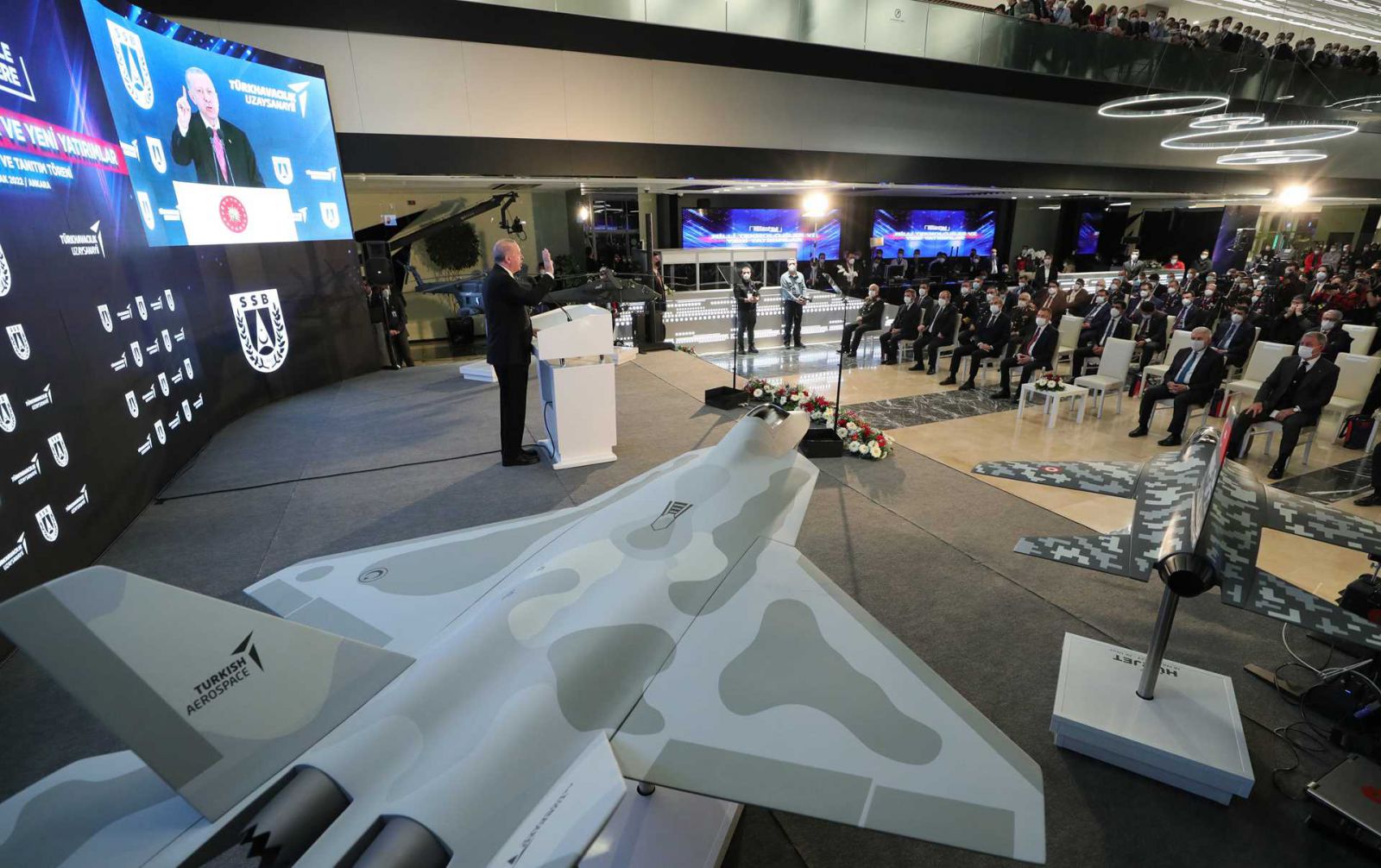
Vice President Fuat OKTAY, Minister of National Defence Hulusi AKAR, Chief of General Staff General Yaşar GÜLER, Land Forces Commander General Musa AVSEVER, Naval Forces Commander Admiral Adnan ÖZBAL, Air Force Commander General Hasan KÜÇÜKAKYÜZ, President of Defence Industries Prof. İsmail DEMİR and Deputy Ministers of National Defence Şuay ALPAY and Muhsin DERE also attended the ceremony.
In his speech at the ceremony, President ERDOĞAN emphasized that thanks to the products developed and produced by TUSAŞ, Turkey can now meet the needs of not only the Turkish security forces but also friendly and allied countries. Noting that the Heavy Class Attack Helicopter project, an upgraded version of the T129 ATAK helicopter developed and produced by TUSAŞ, continues, ERDOĞAN said, "With the Phase-2 version equipped with the combat systems produced here, our ATAK helicopter has become one of our most important tools in our fight against terrorism. This year, we are starting to deliver our first indigenous helicopter, GÖKBEY, which was produced entirely by our own engineers and technicians. Our biggest expectation from TUSAŞ is to reach a level that can compete with the world in aircraft technology."
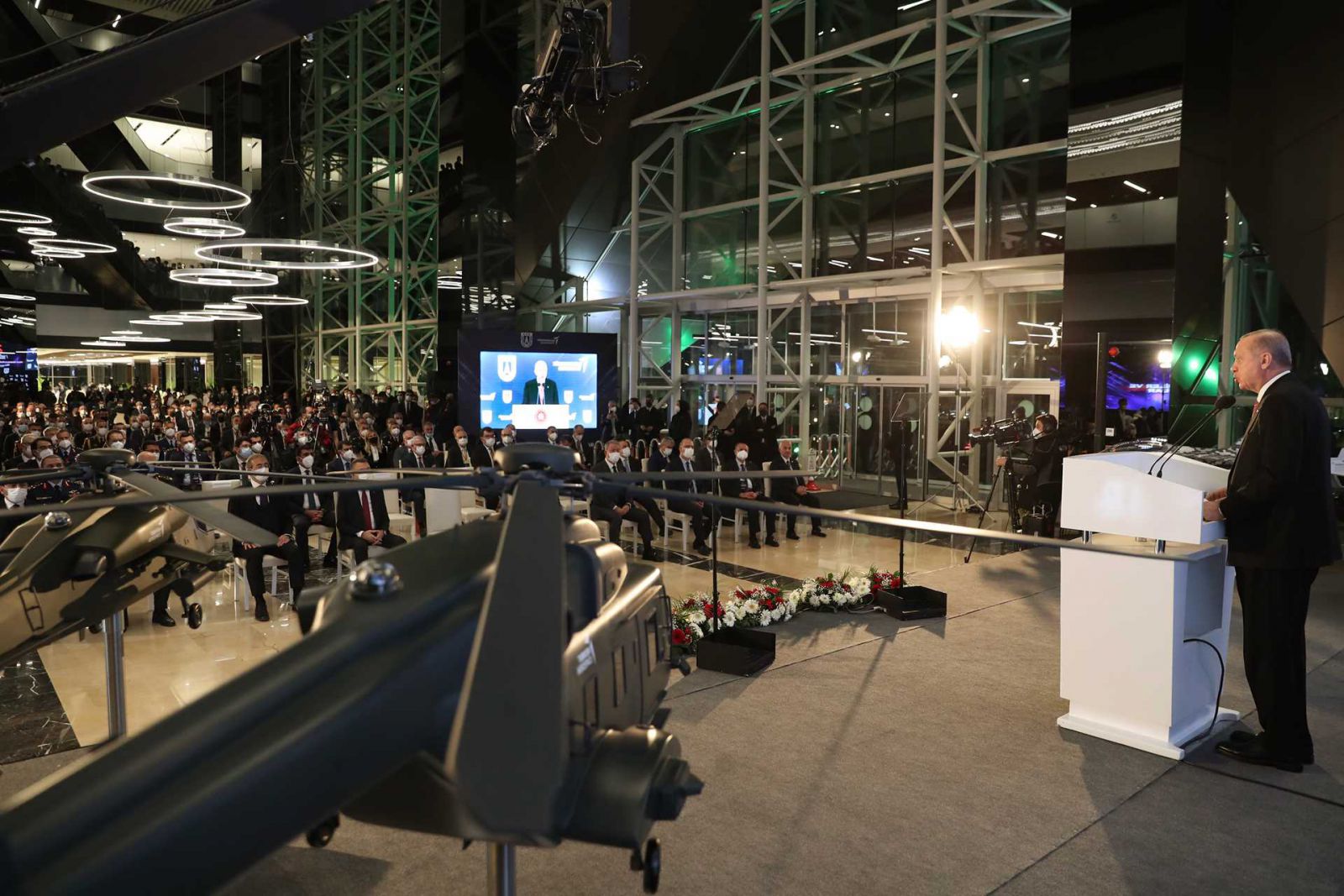
Stating that the deliveries of the HÜRKUŞ trainer aircraft and the production of Turkey's first jet-powered trainer aircraft, HÜRJET, continue, ERDOĞAN said, "Now it's time for our National Combat Aircraft (MMU/TF-X), which is one of the most important defence industry projects of our country. Hopefully, the engineering center will be the heart of our National Combat Aircraft Project. About 2,300 engineers will take part in the project to carry out their work in this center equipped with the latest technologies. Hopefully, we will perform the roll-out ceremony in 2023 and show it to the whole world. Our National Combat Aircraft, which will make its first flight in 2025, will enter service with the Turkish Air Force in 2029, after the test and qualification processes."
In his speech at the ceremony, the Minister of National Defence Hulusi AKAR stated that the new facilities will make significant contributions in defence and aerospace and further strengthen locality and nationality in the Turkish Defence Industry. Minister AKAR pointed out that digitalization, artificial intelligence, and cyber-security are rapidly shaping the world of today and the future.
Stating that these issues also have an important place in the defence industry, Minister AKAR said, "We have read this change in the world correctly, set strategic targets, acted proactively in this context, invested in R&D in almost every field, especially in the defence industry, and achieved significant success in the defence industry."
In the opening ceremony of the new centers and facilities that will make significant contributions to the National Technology Move, President of Defence Industries Prof. İsmail DEMİR stated that Turkey should work harder and achieve great success to become a global power. "Over the years, many aeronautical engineers had to go abroad and do engineering in other subjects. Because there was not a will, a vision, a project. In fact, when the F-16 assemblies were finished, there were discussions about what to do with TUSAŞ. But today, thankfully, our aircraft engineers do not have a problem finding a job. If something is man-made, we can do it better. Let's believe in this. Thankfully, we see this will and determination in our youth." Expressing that the new facilities are the seeds for the future, President DEMİR said, "The wind tunnels to be built here will be one of the most important elements in Turkey's future aerospace projects."
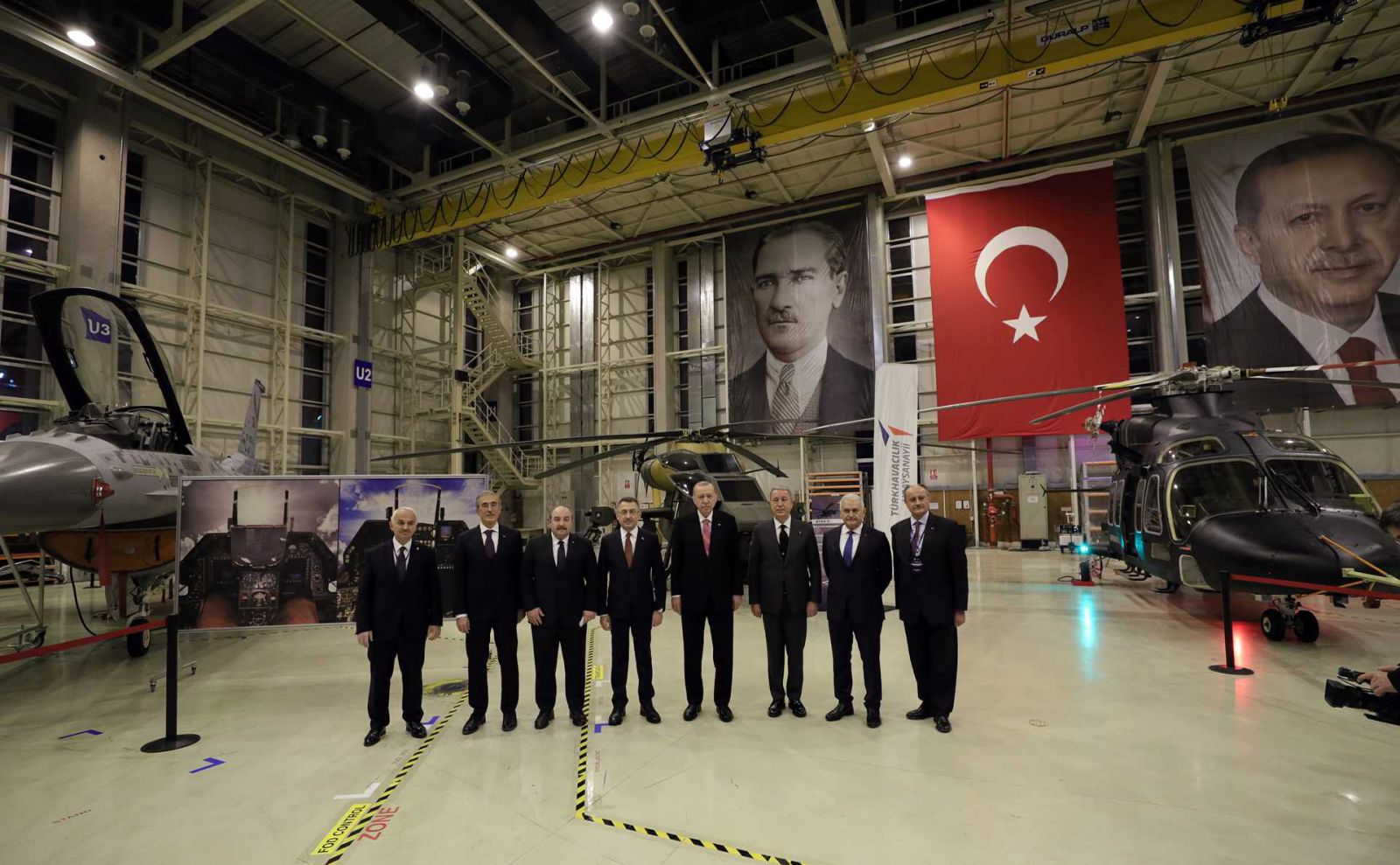
The MMU (TF-X/Turkish Fighter) Engineering Center was established with an investment of TRY220 Million (about US$16.3 Million). It will employ 2,300 personnel where the works on the National Combat Aircraft, one of Turkey's most critical defence projects, will be carried out. Equipped with state-of-the-art technologies, the engineers will be able to carry out all their activities at the center without an external dependence.
The Composite Production Building was established with an investment worth around TRY412 Million. The factory will be Turkey’s largest and the world's 4th largest composite facility under a single roof. The Composite Production Building consists of 19 blocks, including the main production center, paint shop, and auxiliary buildings. Around 150 engineers and 850 technicians will work at the facility, which has the capacity to meet 2% of the global composite aircraft structure market.
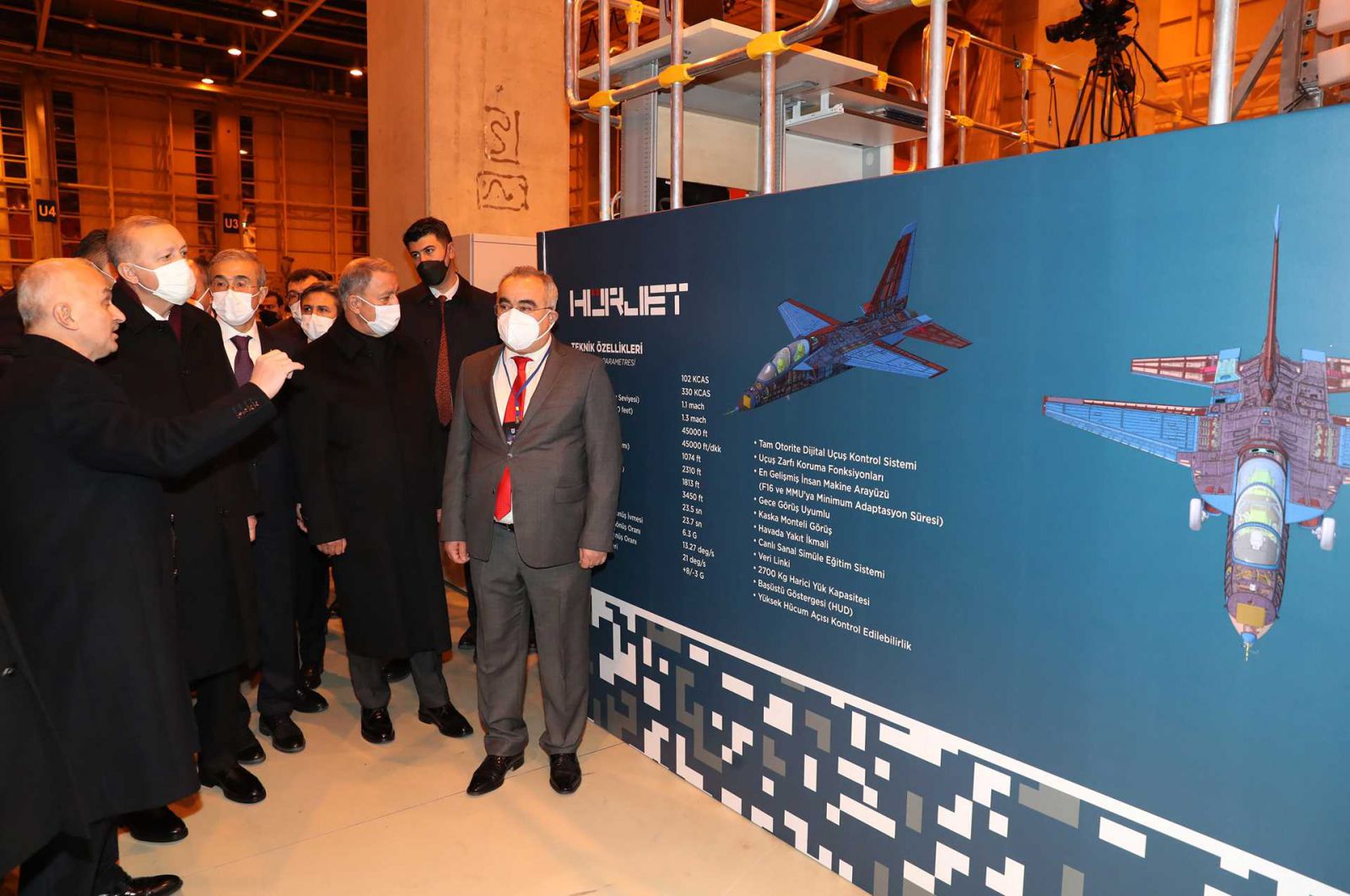
Another center inaugurated during the ceremony is the Space Systems Engineering Center that was completed with an investment of around TRY31 Million. The center, which was established for design activities and hardware production, will employ 718 personnel. The Factory-Level Component Maintenance and Control Center, which was built with an investment of TRY53 Million, is set to provide jobs for 510 people.
The ceremony will also see the inauguration of 16 new factories at the Ankara Aerospace and Aviation Specialized Organized Industrial Zone (HAB OIZ), which continues its activities on an area of 730 hectares (1,804 acres) right next to TUSAŞ as Turkey’s first specialized OIZ in the defence industry. HAB aims to support the domestic industry in aerospace, bringing together local and foreign companies to create synergy and produce high value-added products and increase exports. The first part of OIZ, which is planned to be built in two parts, has been completed. For the second part, 90% of the infrastructure is scheduled to be completed in the first half of this year. There are currently 18 facilities in the HAB OIZ, and 57 facilities are still under construction. When HAB is completed, it will host 300 enterprises, 150 of which are industrial enterprises, and 15,000 employees.

MKE 20mm CIWS to be delivered to the navy before the end of this year:
A MKE official, whom I had the opportunity to meet with during the SAHA EXPO 2021 Fair held in Istanbul between 10-13 November 2021, drew attention to the completion of the qualification process of the 6-barrel 20x102mm rotary type weapon used in the 20mm Close Air Defense System (CIWS), and then with the stabilization of the turret system. He stated that the relevant studies had started. In the upcoming period, with the 20mm Close Air Defense System Final Prototype, firstly, firing tests will be carried out on land, then the GENESIS/ADVENT Combat Management System (CMS) Integration phase will be started and it will be checked whether the 20mm Close Air Defense System works in harmony with the CMS on the ship. After integration with CMS, sea firing tests will be carried out. Thanks to the CMS integration, the 20mm Close Air Defense System will be able to receive target information from the surveillance and fire control radars on the ship, and then engage the determined target from an appropriate distance by optical tracking (target tracking) via the EO System on it. Following the completion of the CMS integration studies, the system level first firing test is planned to be carried out in early 2022.
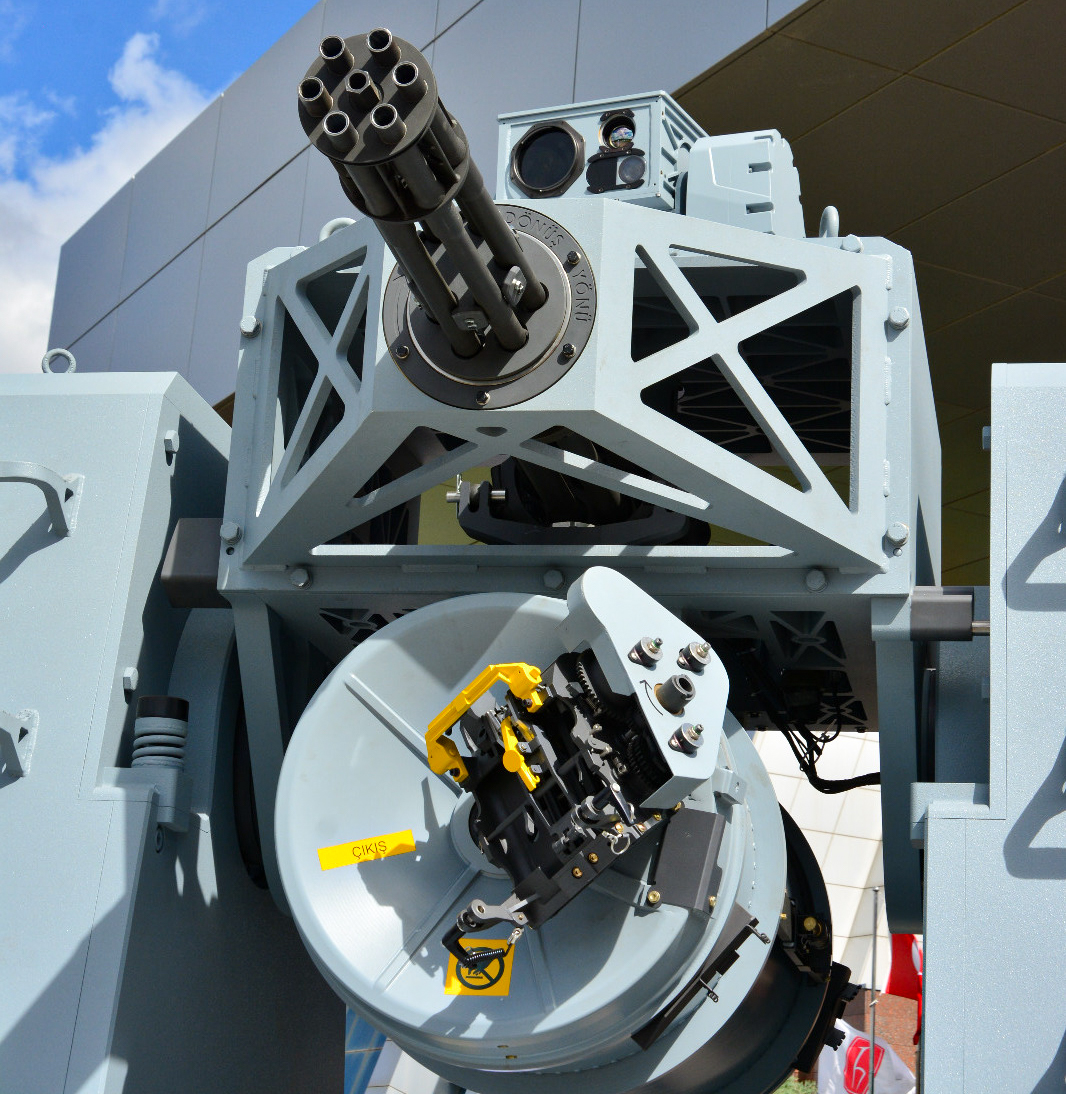
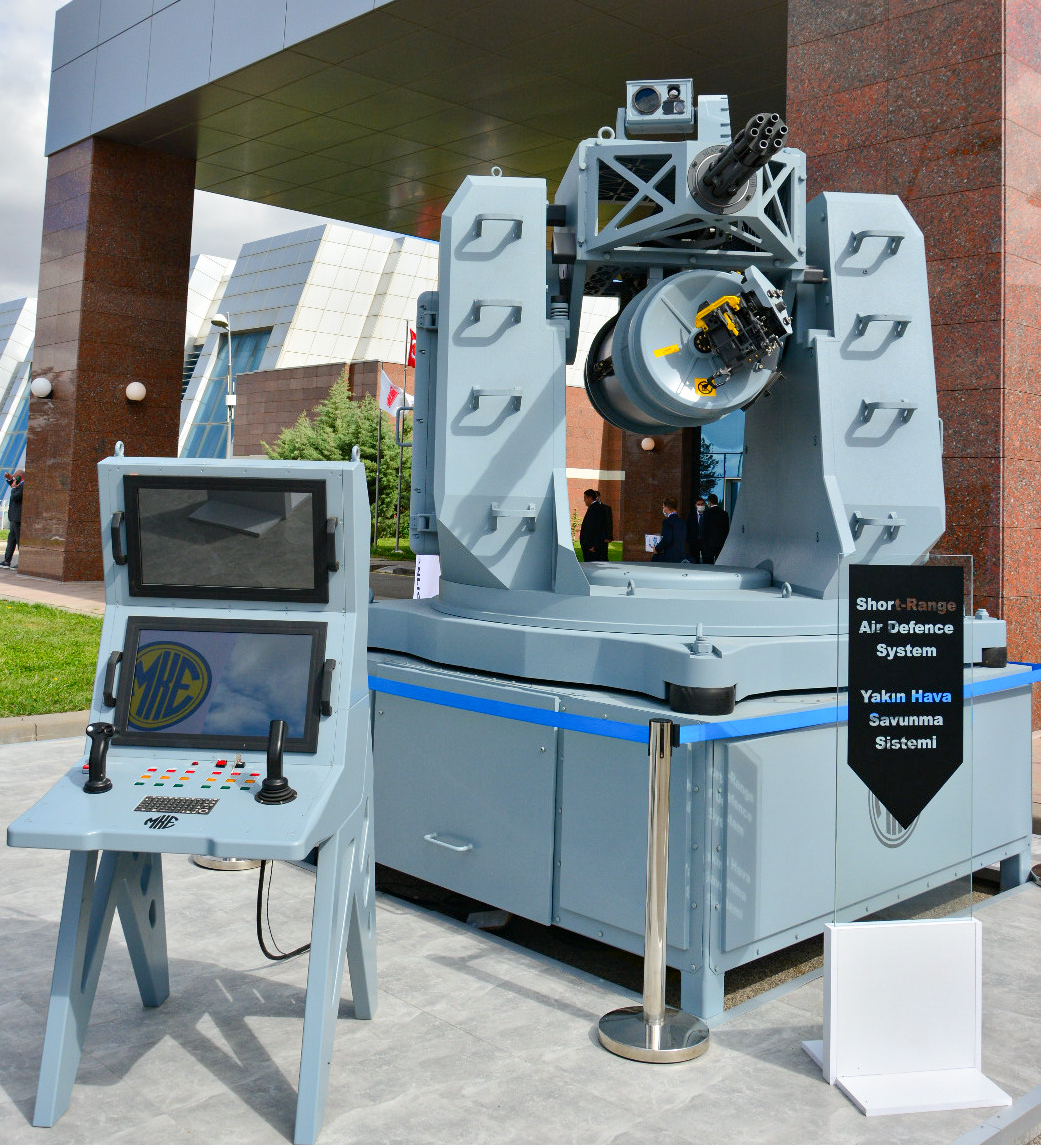
A MKE official, whom I had the opportunity to meet with during the SAHA EXPO 2021 Fair held in Istanbul between 10-13 November 2021, drew attention to the completion of the qualification process of the 6-barrel 20x102mm rotary type weapon used in the 20mm Close Air Defense System (CIWS), and then with the stabilization of the turret system. He stated that the relevant studies had started. In the upcoming period, with the 20mm Close Air Defense System Final Prototype, firstly, firing tests will be carried out on land, then the GENESIS/ADVENT Combat Management System (CMS) Integration phase will be started and it will be checked whether the 20mm Close Air Defense System works in harmony with the CMS on the ship. After integration with CMS, sea firing tests will be carried out. Thanks to the CMS integration, the 20mm Close Air Defense System will be able to receive target information from the surveillance and fire control radars on the ship, and then engage the determined target from an appropriate distance by optical tracking (target tracking) via the EO System on it. Following the completion of the CMS integration studies, the system level first firing test is planned to be carried out in early 2022.


- The 20mm CIWS has a rate of fire of at least 3000 rds/min with 4000 rds/min achieved during the tests. Work is underway to achieve 6000 rds/min in the future.
- Magazine has 1500 rounds and is reloaded in 5-10 min.
- Currently it uses the ships radar for target detection and its own EO device with integrated IFF for engagement. Work is underway to fit radar(s) to it.
- A land-based variant on a trailer with radar is also under development (C-ram equivalent).
A new TF-X/MMU promo vid with a remarkably changed design. The vertical stabilizers have changed quite a lot:
Are you sure it is how the MMU/TFX will look like?? Sorry, but the design in the first row - in fact more a caricature of a fighter than a design - has nothing to do with the second design shown ... IMO it is just a fancy PR-video, nothing more.



